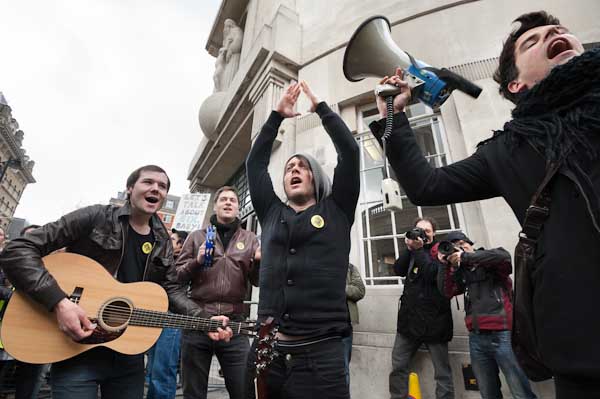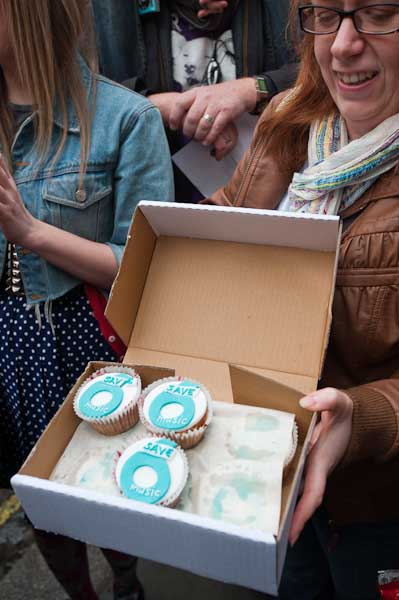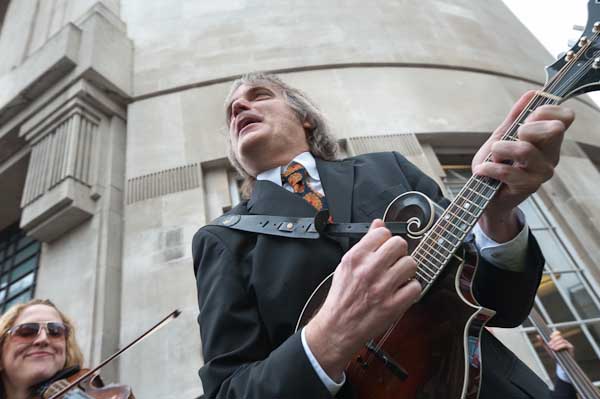In a way it’s good news that I’m rather getting behind with writing about my own work here, and also in putting it on My London Diary. Good because I often write about the problems that I’ve had or silly mistakes I’ve made, and there has perhaps been less than usual to write about, but also good because it means I’ve been busy.
Too busy in fact to put my recent work on My London Diary, though some of it at least has gone on to Demotix, which gets it to a larger audience with the slight hope that it might sell. Although I’ve always been determined not to let money determine my priorities, it does come in handy at times, and this is one time of year that I’m reminded about it, as today is the start of a new tax year. I’m afraid the Chancellor can’t expect too much from me, and I for one won’t be at all worried about the coming in of a new 50% tax rate for high earners. Though as I’ve said before, “the poor pay taxes, the rich pay accountants.”

It’s over a week ago – last month even – that I was outside Broadcasting House in London to photograph a “protest party” against the closure of BBC 6 Music, a digital-only station that is hidden away somewhere hard to find on my DAB radio but can be listened to world-wide on the Internet. It plays a rather wider range of music than the chart-orientated stations and has access to a huge BBC archive including the sessions by the late John Peel, who I sometimes used to listen to despite the music he played (it wasn’t all bad.) Six isn’t a station I listen to, but much more at the core of public service broadcasting than say Radio 1 or 2 (or BBC 1 TV) which aim at exactly the same audience as most commercial broadcasters.

Cutting it – as the BBC intend – doesn’t really seem to be a case of saving money. It actually costs less overall than one or two of the popular presenters elsewhere in the BBC (who would be no great loss) each earn. It’s a pin-prick in the budget, but along with the Asian Network fits untidily with the BBC’s marketing plans. Frankly they should sack the marketers, which would also save them more.

You can see the pictures from the event and read more about it on my London Diary.
The only real problem in taking pictures was the rain, with several heavy showers. Another advantage of the new Nikon 16-35mm (which this month’s British Journal of Photography expects to come out later this year – and I’ve been using for around 5 weeks) is that it is fairly well waterproofed. Of course I have a UV filter on the front. With long lenses the lens hood offers useful rain protection, but on a wide-angle this is very limited, and you get in the habit of wiping the filter with a cloth very regularly and before virtually every shot. Even then you lose a few, though sometimes the drops fall on areas that don’t really affect the picture. The kind of diffused blur a raindrop gives isn’t a great problem on clouds for example.
After this outing, my two Nikons have now each acquired a small piece of black tape across the small lever that switches from matrix to centre-weighted to spot metering. Although spot metering can be very useful (and I used to use it all the time with black and white film in the Olympus OM4, though it was a rather large spot) if you select it unknowingly it can give rather unpredictable results. With the Nikon D300 and D700 there are also some easily forgotten interactions with other areas of the camera and flash operation. Useful though spot metering can be, it isn’t something you ever want to use by accident.
I’m also finding it far too easy to change exposure mode by accident – and to forget to return it to my normal P setting when I’ve deliberately altered it for a particular series of shots, and can see no easy solution to this. It is surprising how long it can take me to realised in the viewfinder that I’m taking everything at 1/2000s or with the lens wide open.
Waiting around with a couple of other photographers at an event the other day, one of them admitted to almost always using his Nikon on ‘P’ setting (as I do) saying he told people that ‘P’ stood for ‘professional’, and ‘A’ for amateur. ‘M’ of course is for ‘mental’ and there were several suggestions for ‘S’, all slightly rude. But with occasional use of the thumb-wheel over-ride, P (or rather then P*) really does provide the easiest and quickest way to get things right.
I’ve mentioned before my “cockpit drill” which – in theory at least – I carry out every time before taking pictures, usually on the way to an event. Checking the ISO, Quality and White Balance settings, thinking about any adjustments I might need to my basic custom settings, and then making sure that shutter speed in S mode, aperture in A mode and both in M mode are set to useful values (usually around 1/200 and f5.6 or f8 though if I know I may suddenly need a fast shutter speed or extreme depth of field I’ll set them for this) so that if I want to switch to them in a hurry I don’t have to waste time fiddling around. Setting sensible values also helps if you switch modes accidentally. Which I do.